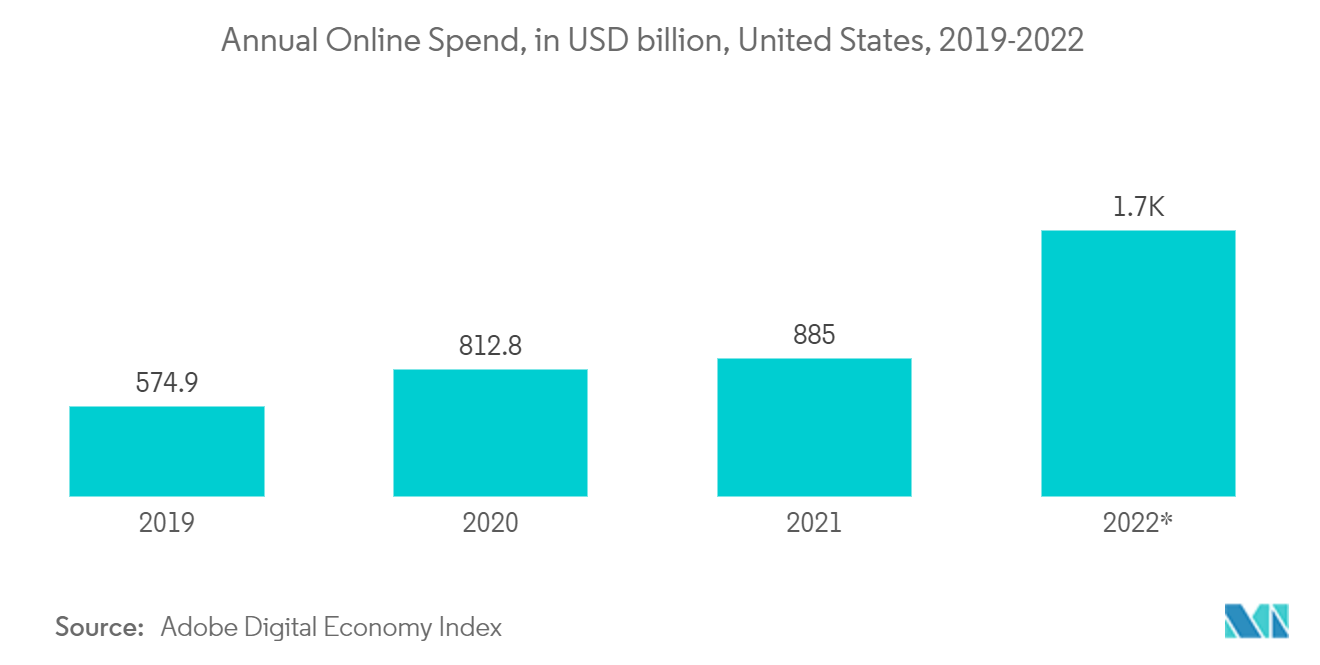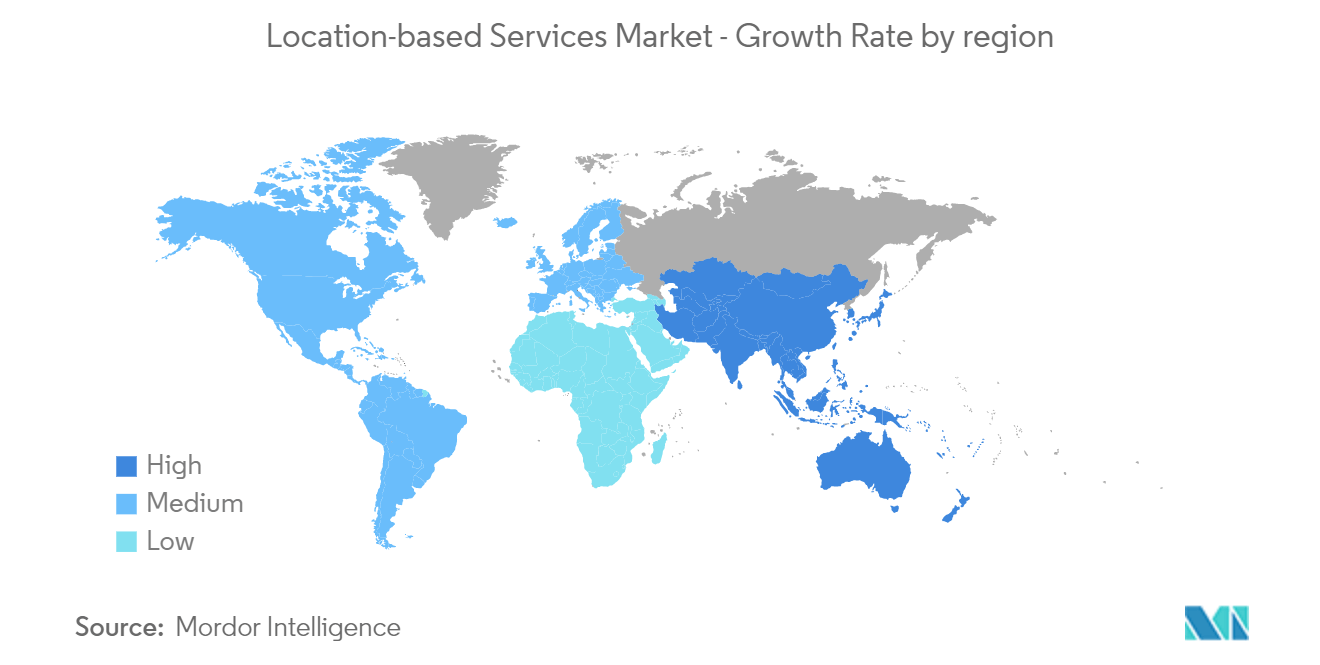Market Trends of Location-based Services Industry
This section covers the major market trends shaping the Location based Services Market according to our research experts:
FMCG and E-Commerce Sector Expected to Witness Significant Growth
- There has been an increasing trend in e-commerce establishments in the past decade. Mobile apps have enjoyed greater success due to their personalization features. They are easier to use and form a direct link between the brands and customers, thus enabling high levels of consumer engagement.
- Mobile apps help e-commerce stores analyze the current market and consumer behavior, resulting in better marketing strategies. E-commerce services based on user location have emerged as an especially important segment of modern information services.In these user-intensive applications, quality of service is important, and design methods are increasingly relying on software standards to achieve quality.
- E-commerce applications provide tailored offers to customers that reside in specific locations. These offers are delivered to customers in the form of personalized notifications, which are more effective than general-purpose push notifications.
- In other words, marketplaces rely on artificial intelligence to identify locations and products that are popular there. Once the data is set up, sellers can pay a one-time cost to have their stock shipped to the final location.
- RTLS includes a wide range of location technologies, from Bluetooth beacons and passive radio frequency identification (RFID) to large-scale systems that keep assets and back-end processes in constant communication.Many warehouse owners choose to use a mix of location-based technologies to meet their needs in the most cost-effective way.
The growth in the e-commerce industry and the need for efficient location-based services worldwide are driving market growth. For instance, U.S. retail e-commerce sales for the second quarter of this year were USD 257.3 billion, up 2.7% from the first quarter of this year, according to the Census Bureau of the Department of Commerce. Moreover, according to IBEF, the Indian e-commerce market is expected to flourish from USD 38.5 billion in 2017 to USD 200 billion by 2026.

Asia Pacific Region is Expected to Occupy Significant Share
- China is not only a major market for LBS in the regional space but also globally, owing to its significant growth in investments toward building infrastructure and technological capabilities, combined with internet and mobile penetration, which have placed the country in a prominent position in the region as well as in the global market.
- According to the 50th China Statistical Report on Internet Development, the number of internet users totalled 1,051 million, and the internet penetration rate reached 74.4% in the country as of June last year, which is huge considering the population of the country. Location-based services should have a lot of opportunities in the country because so many people have access to the internet and more people are getting smartphones.
- Moreover, Japan is home to one of the major automotive industries and a prominent exporter. With motor vehicle exports in value terms amounting to USD 12.71 billion and auto-related employment in Japan totalling 5.52 million people (as per the Japan Automobile Manufacturer Association), the automotive industry is one of the Japanese economy's core industrial sectors.
- With such a growing automotive industry, Japan has a well-built navigation infrastructure and focuses on building technology and infrastructure for autonomous vehicles. The country is implementing 3D maps with self-driving vehicles and offering disaster information via car navigation systems, which have an AI-based assistant.
- India's social media penetration is growing significantly. WhatsApp is the most used app in India, with 81.2% penetration, followed by Instagram, Facebook, Telegram, and Twitter. Besides, various major social media enterprises are increasingly focusing on the country to increase their active users.
- Such trends show the excellent potential for the growth of the LBS market in the country and encourage various vendors to include the service in their portfolios. For example, in August of last year, IT services behemoth Wipro Ltd announced a collaboration with HERE Technologies to provide location-based services to customers in the energy and utilities, manufacturing, transportation and logistics, telecom, and automotive industries.
- Similarly, in October last year, Ola, a leading cab aggregator and e-vehicle maker, announced that it had acquired GeoSpoc, a geospatial service provider, to help develop more accurate mapping, incorporate multi-modal transportation options, and deploy real-time satellite imagery to access road quality for increased safety.


